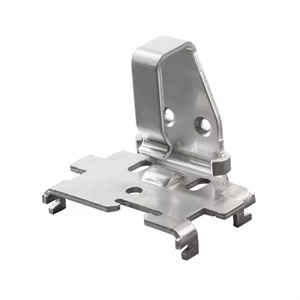Precision Stamping Parts tempering is a heat treatment process that specifically refers to the process of reheating quenched precision stamping parts to an appropriate temperature below the lower critical temperature Ac1 (the starting temperature of pearlite to austenite transformation during heating), holding for a period of time, and then cooling them to room temperature in media such as air, water, and oil.
The main purposes of heat treatment include:
Improving hardness and strength: enabling components to withstand greater loads and wear, enhancing their durability and reliability.
Improve toughness and ductility: While ensuring a certain level of hardness, avoid excessively brittle components and prevent fracture during use.
Eliminating residual stress: reducing the internal stress generated by components during stamping processing, preventing deformation and cracking.
Improving dimensional stability: After heat treatment, the dimensional changes of the components during use are reduced, ensuring long-term stability of accuracy.
When manufacturing stamping components of precision electronic connectors, low-temperature tempering treatment may be carried out to improve the hardness and wear resistance of the components without reducing conductivity; For precision stamped valve spring seats in automotive engines, nitriding treatment may be used to enhance surface hardness and fatigue strength.
Tempering can be divided into low temperature tempering, medium temperature tempering, and high temperature tempering, with specific temperature ranges of 150-250 ℃, 350-500 ℃, and above 500-650 ℃, respectively. Different tempering temperatures can result in different microstructures and properties. For example, low-temperature tempering can produce tempered martensite, which has high hardness and wear resistance; Medium temperature tempering can obtain tempered martensite, which has high elasticity and yield point; High temperature tempering can obtain tempered martensite, which has good comprehensive mechanical properties.
In the production process of precision stamping parts, tempering is an important process. By combining quenching and tempering, the required mechanical properties can be obtained to meet the requirements of precision stamping parts.
